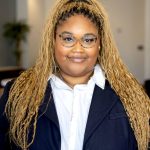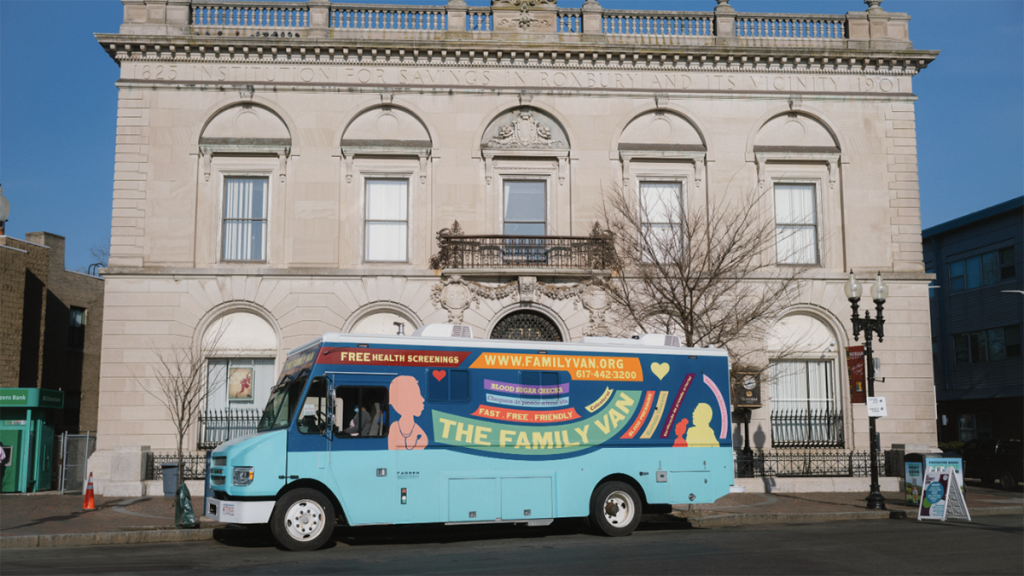
Mobile Health Map’s mobile Health Clinic van sits on an empty street in Boston, Mass. Photo: Dave Cooper
How community mapping can lead to impact in public health and community journalism
A conversation with Kait Guild and Michael Lawler, Mobile Health Map
At Mobile Health Map, a network of mobile health clinics based at Harvard Medical School, the staff focuses on relationship building, collaboration and evaluation in ways that are deeply rooted in their communities.
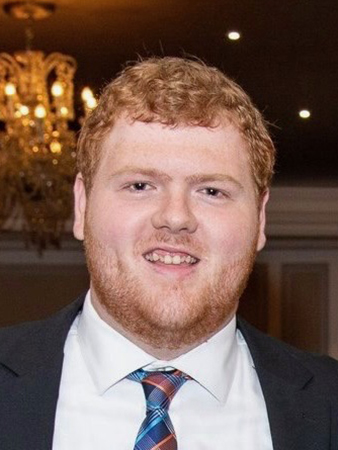
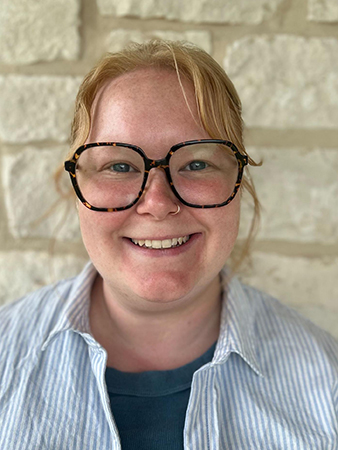
Innovation in Focus student staffer Taylor Bowman spoke with Kait Guild, manager of evaluation and strategic relationships for Mobile Health Map, and Michael Lawler, program and operations coordinator for Mobile Health Map, to dive deeper into the importance of asset mapping, how it’s influenced their research into eliminating healthcare disparities and how journalists can use it to build deeper connections and understanding of their audience.
Bowman: One of your current focuses is helping communities map their local resources. What does that process look like, and why is it important for nonprofit organizations to do this?
Guild: We do a lot of work around needs assessment. I don’t love the term because in many ways it applies to an outsider coming in and identifying needs. But we take a really different approach. We try to co-create the process by utilizing advisory boards, community listening sessions, focus groups…really engaging community leaders. And thinking outside the box of who are those community leaders, then allowing them to not only define their needs, but also highlight their assets and strengths in community. And I think this is something that tends to be overlooked in evaluation and needs assessment. So many times, there are innovative, strategies and practices already happening in the community, and there are so many leaders already doing this work.
I think asset mapping is one of the first, most important steps to understanding the needs of a community, because it allows you to see who are the leaders, who’s doing this work, and then what are the gaps in this work? How can we uplift the strengths of this community, the assets of this community?
Bowman: Do you have any advice for finding those non-traditional community leaders?
Guild:You can start by identifying leaders that stick out to you. If you’re doing mobile health, for example, you might look at healthcare systems, food banks, anything related to health. But then having those conversations with leaders of those health related spaces, they’ll start to talk to you about who are our community members and who do those community members look to for guidance, trust, and who do they respect? And that’s where [you’ll find] other leaders, like pastors or faith leaders or folks running immigrant-based organizations or folks just in immigrant communities that are respected, looked up to and trusted.
We also encourage our mobile health clinics to think about: Who are you serving? Who are you not serving? Who do you want to serve? And then who would be someone in that community that already has the trust and recognition and respect of those patients? And through them, you’ll be able to bridge that trust and respect by building a strong relationship with that community leader.
Bowman: Do you have an example where you helped identify community resources in a different or innovative way?
Guild: A program in Tulsa, Oklahoma, called Skillz on Wheelz was part of our accelerator, which is a learning collaborative we offer annually that’s funded by the CDC. Through the asset mapping process, they were able to identify community leaders, build an advisory board, and then they utilized their board to reach out to folks through Facebook. They developed different questions, trying to understand who are the communities that they want to serve, what are the challenges that their communities face? And each of their board members would post on their personal Facebook pages with these questions. And they got hundreds of responses. It was really incredible. And I know social media doesn’t seem innovative, but a lot of the time we overlook social media, especially Facebook.
Bowman: How do you think journalists and newsrooms can use asset mapping to their advantage?
Guild: Journalists are so community-grounded in the work that they do, and they are building trust with leaders to encourage folks to provide input, or even encouraging folks to recognize themselves as experts to engage in these kinds of conversations. By identifying those leaders, by identifying the strengths in the community, it will help journalists better understand the communities they’re working within. It will help them better understand and define who is an expert they want to engage in conversation.
I think asset mapping also helps identify gaps in the community, and so it can help journalists understand what challenges to highlight, and how can the existing assets address those challenges?
Bowman: How do you make sure the mapping process is reflective of the communities’ real needs and voices? What do those challenges look like?
Guild: I think trust and buy-in is probably the biggest challenge. Reaching out to community leaders takes time. It also takes intention around how you’re approaching that conversation. You want to make sure that your work isn’t extractive. And that you’re really utilizing these relationships and building these relationships to co-create a solution. So things like feedback loops are super important. [For example,] going to a community leader, asking for their insight, building a partnership and collaboration, and then bringing back your findings to that leader, to that community, is really crucial.
It’s really about building something together.
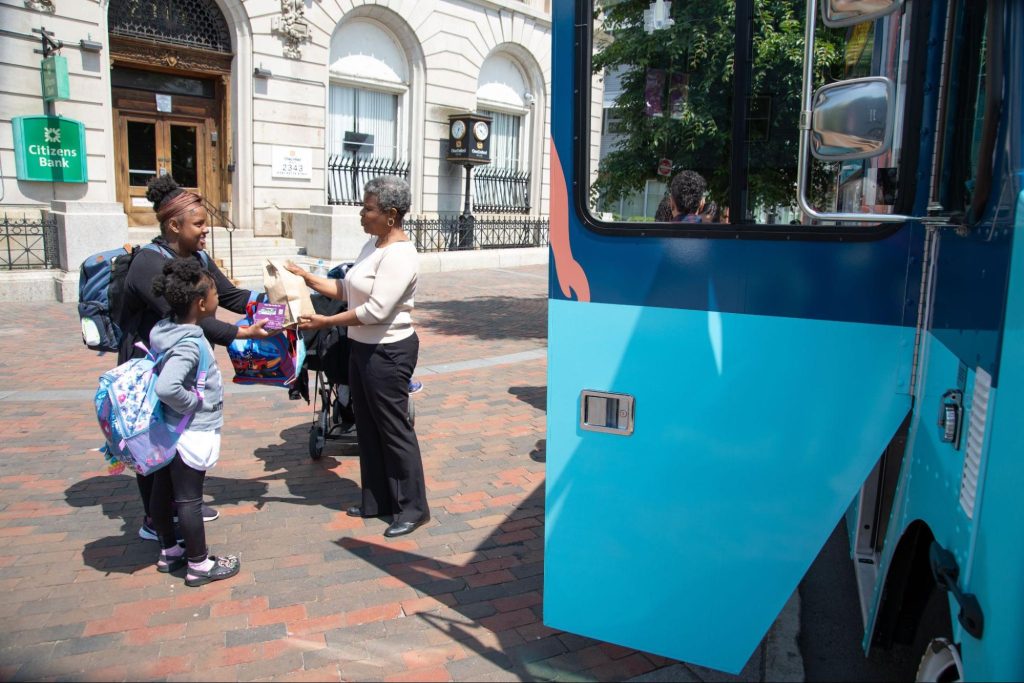
Bowman: From your public health and community engagement background, what lessons can news organizations learn about building trust and relationships with communities?
Lawler: It’s about showing up not just when you’re doing a story, but showing up before you have to tell their story because of something else. I’ve seen a lot of that here in our Boston media newsrooms. Every week they do a segment about a different nonprofit, and they highlight it and tell about the amazing work. Just showing up so that you’re not just highlighting them because of another issue. I think that goes a long way toward building trust, especially in the communities. It shows that you’re there and that you’re supporting them.
Guild: I would echo what Michael said. I think utilizing community advisory boards or committees is a really helpful way to stay in touch with the community, to keep tabs on what’s happening, but also providing a really intentional opportunity for co-creation for the direction of the work you’re doing as journalists. What stories are you telling, and who are you engaging in telling those stories? I think that’s the most important piece.
Bowman: How do you balance operational priorities—like data, logistics and technology—with the human side of community relationships?
Lawler: I’m a really big tech and data and operations guy, so that was always my focus area: how are we collecting the data? What are we doing? How’s the flow of the room gonna work? But also being able to adjust in the moment and not be rigid on the plans. You can have a great plan, but it’s still gonna change no matter how hard you try to stick to it, and being able to go with that flow and fix things in the moment so that you’re prioritizing the human element of it. So, [seeing] what’s working for the people that are coming to your clinic, for example, but also being able to get what you need.
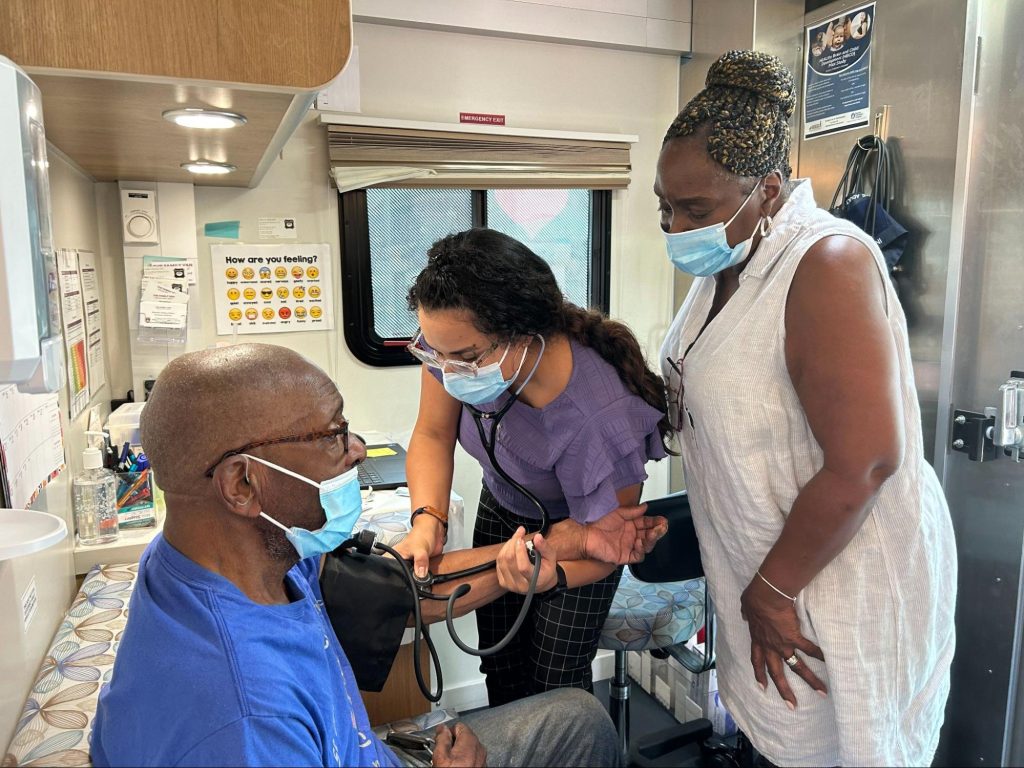
Guild: [For Mobile Health Map], we have awesome free tools on our website that calculate the return on investment, emergency department visits avoided, life years saved and dollars returned to the healthcare system, which are super crucial metrics when reporting to funders and reporting to your board to show the value of your program. But we really work hard, Michael and I, in our communication with programs to say, this is one part of the picture that’s going to speak to one audience. At the end of the day, the important piece is, are your services relevant and being received well by the community?
Michael and I work with mobile clinics to also help them utilize surveys…focus groups, and even informal forms of communication to get constant feedback from patients and from providers. Even in our tools, we’re currently building out our resource hub to highlight things that can capture that qualitative feedback.
Editor’s Note: This interview has been edited for clarity and brevity.
Cite this article
Bowman, Taylor (2025, Oct. 28). How community mapping can lead to impact in public health and community journalism. Reynolds Journalism Institute. Retrieved from: https://rjionline.org/news/how-community-mapping-can-lead-to-impact-in-public-health-and-community-journalism/
